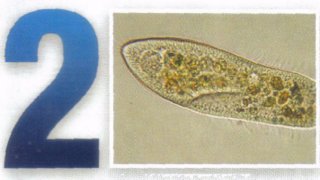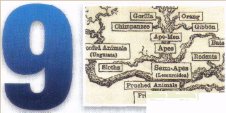10 Ways Darwin Got It Wrong
 |
"Although you
would not learn it from reading biology textbooks, Darwin's tree
of life has been uprooted" Dr Jonathan Wells |
The following is
adapted from GOOD
NEWS FEATURE Magazine
•
10 Ways Darwin Got It Wrong Nov/Dec 2009 by Mario Seiglie - No copyright intended.
[Please note the word "human" has been used in this article although we reject it by its very definition. For more, see "Human" on the alphabetical list on our Sunday Worship Terms page. pw = pagan word]
While
mass media constantly bombards us with information favoring evolution,
and science textbooks invariably teach what they believe Darwin got
right, these sources rarely admit what he got wrong.
10
Assumptions Of Darwin's Theory That Have Turned Out To Be Wrong.
 The "warm
little pond" theory
The "warm
little pond" theory
Charles
Darwin once wrote to his good friend Joseph Hooker about the
possibility of life arising spontaneously from "some warm little pond."
During his
day, some scientists still believed in "spontaneous generation," the
idea that life can arise from nonlife—which was Darwin's hope. Later,
the famous French scientist Louis Pasteur decisively refuted the idea,
and 150 years of observation and experimentation have confirmed these
results.
It turns out life is supremely more complex than Darwin could have ever imagined.
Several
decades ago, the famous Miller-Urey experiment was supposed to shed
light on the origins of life. By running a mixture of gases through
heat and electricity, they produced a tarlike substance that formed
some amino acids. But we now know that the experiment was rigged, since
oxygen, which was excluded, would have ruined the results. And
scientists have concluded that oxygen was present when life first
appeared.
Even with
this rigged experiment, however, there was no assembly of amino acids
so as to reach the next level of the building blocks of life—the
enormously complex proteins, which themselves must be precisely
integrated into sophisticated systems.
While the
Miller-Urey experiment yielded the artificial chemical production of
some crude organic building blocks, no building came of it. How do you
get the loose blocks to form an elegant and functional house— with all
the blocks in the right places?
This
comparable house would also include a foundation, walls, doors,
windows, roof, electrical power and a sewer system. Additionally, it
needs to create a variety of materials besides the blocks that have to
be precisely formed and fitted, and then it must have the ability to
reproduce itself.
We are
referring, of course, to a living cell, the
staggering complexity of which defies the imagination. Indeed, the most
primitive cell is far more complex than even the most sophisticated of
houses, as pointed out in the next section of this article.
When
scientists do the math, Darwinism just doesn't add up to anything
probable or possible.
Sir Fred Hoyle, the late British astronomer and mathematician who was knighted for his scientific accomplishments, observed about the Miller-Urey experiment: "The... building blocks of proteins can therefore be produced by natural means. But this is far from proving that life could have evolved in this way. No one has shown that the correct arrangements of amino acids, like the orderings in enzymes, can be produced by this method...
"A junkyard contains all the bits and pieces of a Boeing 747, dismembered and in disarray. A whirlwind happens to blow through the yard. What is the chance that after its passage a fully assembled 747, ready to fly, will be found standing there? So small as to be negligible, even if a tornado were to blow through enough junkyards to fill the whole Universe" (The Intelligent Universe, 1983, pp. 18-19, emphasis added throughout).
The scientific evidence indicates that life did not and could not somehow arise spontaneously from some warm little pond, as Darwin thought. What we find from the evidence around us and from the fossil record is that, as the law of biogenesis states, life can only arise from life.
During his
day, some scientists believed that life could arise from nonlife. It
turns out life is far more complex than Darwin imagined.
Darwin believed that huge variations simply popped out of cells at random—something that was later proven to be entirely false.
The supposed simplicity of the cell
Consider for a moment the simple, humble bacteria. What Charles Darwin saw under a crude microscope looked quite primitive—a rounded glob of matter called "protoplasm"—and he thought it consisted of a few elementary components that could be easily assembled.Yet today we know bacteria contain complex molecular machines, each bacterium being more like a sophisticated automobile factory with multiple robotic devices and a complex control center.
As molecular biologist Jonathan Wells and mathematician William Dembski point out: "It's true that eukaryotic cells are the most complicated cells we know. But the simplest life forms we know, the prokaryotic cells (such as bacteria, which lack a nucleus), are themselves immensely complex. Moreover, they are every bit as high-tech as the eukaryotic cells—if eukaryotes are like state-of-the-art laptop computers, then prokaryotes are like state-of-the-art cell phones ... There is no evidence whatsoever of earlier, more primitive life forms from which prokaryotes might have evolved" (How to Be an Intellectually Fulfilled Atheist (or Not), 2008, p. 4).
These authors then mention what these two types of cells share in terms of complexity:
• Information processing, storage and retrieval.
• Artificial languages and their decoding systems.
• Error detection, correction and proofreading devices for quality control.
• Digital data-embedding technology.
• Transportation and distribution systems.
• Automated parcel addressing (similar to zip codes and UPS labels).
•Assembly processes employing pre-fabrication and modular construction.
• Self-reproducing robotic manufacturing plants.
So it turns out that cells are far more complex and sophisticated than Darwin could have conceived of. How did mere chance produce this, when even human planning and engineering cannot? In fact, no laboratory has come close to replicating even a single human hair!
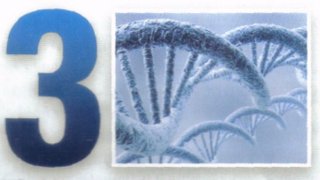
His ideas about the information inside the cell
Back in Darwin's day, scientists didn't know what type or quantity of information was embedded within the cell. Darwin assumed it would be very elementary—only a few instructions to tell the cell how to function.Because he believed in the simplicity of the information of the cell, he came up with a theory called "pangenesis," where huge variations simply popped out of cells at random—something that was later proven to be entirely false.
150 years later, the information inside the cell is now known to be truly mind-boggling.
First, you have to consider what type of information is stored inside the nucleus of a cell. It turns out to be a genetic language— equipped with a four-letter digital alphabet and even grammatical rules—vastly superior to any computer language ever designed by man. Bill Gates, founder of Microsoft, the world's largest software company, stated that "DNA is like a computer program but far, far more advanced than any software ever created" (The Road Ahead, 1995, p. 188).
Inside the nucleus of each human cell are found thousands of carefully codified instructions (called genes) that have to be translated, transported and reproduced. Information, scientists, have realized, is not made of matter—it has no mass, length or width—but it can be conveyed by matter. Neither has it been shown that information can evolve or be improved through mutations.
Each human DNA molecule contains some three billion genetic letters—and, incredibly, the error rate of the cell, after all the molecular editing machines do their job, is only one copying mistake (called a point mutation) for every 10 billion letters!
[How could such a complicated "computer programming language be developed by chance, in the first place, and be a language that is universally recognized by all creation ]
As physicist and chemist Jonathan Sarfati explains: "The amount of information that could be stored in a pinhead's volume of DNA is equivalent to a pile of paperback books 500 times as high as the distance from Earth to the moon, each with a different, yet specific content. Putting it another way, while we think that our new 40 gigabyte hard drives are advanced technology, a pinhead of DNA could hold 100 million times more information" (DNA: Marvelous Messages or Mostly Mess? March 2003, online edition).
Could evolution and natural selection, without any intelligence behind them, create such precise and sophisticated DNA instructions—including the instincts, found in every species, that enable creatures to survive? It takes far more belief to think that blind, random evolution could come up with such amazing DNA information than to believe an Intelligent Designer is behind this astounding amount of accurately coded language!
Remarkably, the discovery of this enormous quantity and quality of information inside the cell led a highly respected philosopher and atheist to renounce his belief that no intelligence was behind the design of the creatures we see around us.
"What I think the DNA material has done," says Sir Antony Flew of Great Britain, formerly one of the world's leading atheists, "is that it has shown, by the almost unbelievable complexity of the arrangements which are needed to produce [life], that intelligence must have been involved in getting these extraordinarily diverse elements to work together.
"It's the enormous complexity of the number of elements and the enormous subtlety of the ways they work together. The meeting of these two parts at the right time by chance is simply minute. It is all a matter of the enormous complexity by which the results were achieved, which looked to me like the work of intelligence " (There Is a God, 2007, p. 75).
Everything we know about DNA indicates that it programs a species to remain within the limits of its own general type. Genetic changes that do occur are typically small and inconsequential, while large mutations, rather than producing improved and novel designs, are overwhelmingly harmful to the organism's survival.
Darwin assumed the information inside the cell would prove to be simple, but he was flat wrong. Instead, it turned out to be of astonishing quantity, quality and complexity.
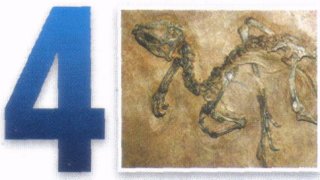
His expectation of intermediate fossils
During his life, Charles Darwin was puzzled over the fossil record. For it to back his theory, the evidence should show a fine gradation between the different animal species and have millions of intermediate links.
He stated it this way: "The number of intermediate and transitional links, between all living and extinct species, must have been inconceivably great. But assuredly, if this theory [of evolution] be true, such have lived upon the earth" (The Origin of Species, 1958, Mentor edition, p. 289).
Yet faced with the evidence, he admitted: "The distinctiveness of specific forms, and their not being blended together by innumerable transitional links, is a very obvious difficulty... Why then is not every geological formation and every stratum full of such intermediate links? Geology assuredly does not reveal any such finely-graduated organic chain; and this, perhaps, is the most obvious and serious objection to my theory" (p. 287).
He thought that eventually the "innumerable transitional links" integral to his theory would be found. But have they?
As paleontologist and evolutionist David Raup readily admits: "Well, we are now about 120 years after Darwin and the knowledge of the fossil record has been greatly expanded. We now have a quarter of a million fossil species but the situation hasn 't changed much.
"The record of evolution is still surprisingly jerky and, ironically, we have even fewer examples of evolutionary transitions than we had in Darwin's time... So Darwin's problem has not been alleviated in the last 120 years and we still have a record which does show change but one that can hardly be looked upon as the most reasonable consequence of natural selection" (Field Museum of Natural History Bulletin, 1979, p. 25).
Where is the gradual evolution of mutated species from one kind to another, what some scientists have dubbed "hopeful monsters," that Darwin predicted would eventually be found in the fossil record?
Niles Eldredge, another famous paleontologist, reluctantly answers: "No wonder paleontologists shied away from evolution for so long. It seems never to happen. Assiduous collecting up cliff faces yields zigzags, minor oscillations, and the very occasional slight accumulation of change over millions of years, at a rate too slow to really account for all the prodigious change that has occurred in evolutionary history.
"When we do see the introduction of evolutionary novelty, it usually shows up with a bang, and often with no firm evidence that the organisms did not evolve elsewhere! Evolution cannot forever be going on someplace else. Yet that's how the fossil record has struck many a forlorn paleontologist looking to learn something about evolution" (Reinventing Darwin: The Great Evolutionary Debate, 1995, p. 95).
"This is the verdict of modern paleontology: The record does not show gradual, Darwinian evolution," notes journalist George Sim Johnston. "Otto Schindewolf, perhaps the leading paleontologist of the 20th century, wrote that the fossils 'directly contradict' Darwin. Steven Stanley, a paleontologist who teaches at Johns Hopkins, writes in The New Evolutionary Timetable that 'the fossil record does not convincingly document a single transition from one species to another'" ("An Evening With Darwin in New York," Crisis, April 2006, online edition).
In other words, the fossil record has let Darwin down. The
"innumerable" missing links of mutating species among the classes of
animals and plants are still missing.
All that has been discovered are varieties of viable and supremely designed species that adapt to their environment—but that show no positive, gradual mutations or any type of evolution taking place.

His failure to see the limits of variation of species
Darwin got the idea about natural selection in part from observing artificial selection. For instance, he noted the way pigeon breeders came up with a great variety of pigeons. Yet we should remember, they are still all classified as pigeons!
He thought that from this variety, given enough time, pigeons could eventually evolve into some other type of birds, such as eagles or vultures, and gradually, even to other creatures such as mammalian bats.
No one seriously disputes the notion of "change over time" in biology—heredity sees to that. We vary from our parents and grandparents—but that is not what the theory of evolution is all about. It is really an attempt to explain how microorganisms, insects, fish, birds, tigers, bears and even human beings actually became what they presently are through the passage of time.
There is also no problem accepting what is called microevolution, or change within a species, where mutation and natural selection do play a role. We have examples in nature of these minor adaptations within organisms, such as microbial antibiotic resistance, modifications in the fruit fly's eyes and wings and the varying beak sizes of finches. But it's crucial to note that these microbes are still microbes, the fruit flies are still fruit flies and the finches are still finches!
Darwinian evolution—what is taught in the schools—is about macroevolution, or changes beyond the limits of the species kind to create another distinct species. It consists of three suppositions: 1) all living things descend from a common ancestor; 2) the principal mechanisms for the changes are natural selection and mutation; and 3) these are unguided, natural processes with no intelligence at work behind them.
But have we seen either in present life-forms or in the fossil record that creatures are slowly changing and mutating from one kind to another? Never.
As biochemist and agnostic Michael Den-ton states: "The fact is that the evidence was so patchy one hundred years ago that even Darwin himself had increasing doubts as to the validity of his views, and the only aspect of his theory which has received any support over the past century is where it applies to microevolutionary phenomena.
"His general theory, that all life on earth had originated and evolved by a gradual successive accumulation of fortuitous mutations, is still, as it was in Darwin's time, a highly speculative hypothesis entirely without direct factual support and very far from that self-evident axiom some of its more aggressive advocates would have us believe" (Evolution: A Theory in Crisis, 1985, p. 77).
Zoologist Pierre Grasse, the late president of the French Academy of Sciences, boldly stated that these adaptations "within species" actually have nothing to do with evolution. They are mere fluctuations around a stable genotype—a case of minor ecological adjustment. He compared these changes to a butterfly flying within the confines of a greenhouse, being able to fly only so far before it has to turn sideways or back.
Darwin hoped future research and discoveries would show that the more than a million species on the earth today or the millions of extinct animal fossils would reveal some gradual transition between them. His lack of understanding the laws of inheritance and the solid genetic barriers that were discovered between species has undermined his case.

His discounting of the Cambrian explosion
Darwin was aware of what is called the "Cambrian explosion"—fossils of a bewildering variety of complex life-forms appearing suddenly, without predecessors, in the same low level of the fossil record. This obviously did not fit his evolutionary model of simple-to-complex life.
Instead of a few related organisms appearing early in the fossil record as he hoped, there was an explosion of life—where the various main body types (called phyla) of living creatures seem to arise around the same time—in fact, 32 of the 33 phyla that we see today. Comparing this development to the progress of man's inventions, it would be as if a toaster, a washing machine, a refrigerator, an air conditioner and a car all of a sudden came on the scene with no mechanical devices preceding them.
Regarding the Cambrian explosion, Time magazine notes: "Creatures with teeth and tentacles and claws and jaws materialized with the suddenness of apparitions. In a burst of creativity like nothing before or since, nature appears to have sketched out the blueprints for virtually the whole of the animal kingdom. This explosion of biological diversity is described by scientists as biology's Big Bang" (Madeline Nash, "When Life Exploded," Dec. 4, 1995, p. 68).
This "Big Bang" of completely different creatures deep in the fossil record posed an enormous problem that Darwin had to admit undermined his theory.
He wrote: 'To the question why we do not find rich fossiliferous deposits belonging to these assumed earliest periods prior to the Cambrian system, / can give no satisfactory answer... The difficulty of assigning any good reason for the absence of vast piles of strata rich in fossils beneath the Cambrian is very great... The case at present must remain inexplicable; and may be truly urged as a valid argument against the views here entertained" (The Origin of Species, pp. 309-310).
Furthermore, this dilemma for evolutionists still exists today, as biologist Stephen Meyer has explained: '"The fossils of the Cambrian explosion absolutely cannot be explained by Darwinian theory or even by the concept called 'punctuated equilibrium,' which was specifically formulated in an effort to explain away the embarrassing fossil record,' Meyer said. 'When you look at the issue from the perspective of biological information, the best explanation is that an intelligence was responsible for this otherwise inexplicable phenomenon'...
'"So when you encounter the Cambrian explosion, with its huge and sudden appearance of radically new body plans, you realize you need lots of new biological information. Some of it would be encoded for in DNA—although how that occurs is still an insurmountable problem for Darwinists. But on top of that, where does the new information come from that's not attributable to DNA? How does the hierarchical arrangement of cells, tissues, organs, and body plans develop? Darwinists don't have an answer. It's not even on their radar'" (quoted by Lee Strobel, The Case for a Creator, 2004, pp. 238-239).
Consequently, after 150 years of searching for an explanation for the Cambrian fossil record, there is still no evolutionary mechanism that can satisfactorily explain the sudden appearance of so many completely different life-forms.
What was
found was not a single organism or a few gradually evolving into many,
but instead there was a sudden emergence of a great zoo of life—a
bewildering variety of complex life forms—all emerging fully developed
near the bottom of the fossil record.
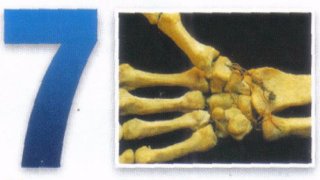
His theory of homology
In his studies, Darwin noticed that different types of creatures shared some common features, such as the five fingers of a human hand and the five digits of a bat's wing or of a dolphin's fin. He postulated that this similarity in different species, which he called "homology," was evidence for a common ancestry.
Yet this argument is based on
an analogy that's quite weak since the fossil record shows no gradual
evolution of these limbs from one species to another. There is,
however, another and simpler way to explain these common features.
Instead of having a common ancestor, these similar features could
simply be the result of a common design.-
We see this common design in
how man builds things. We construct a car, a cart and a vacuum cleaner
with four wheels, but this doesn't mean they have a common ancestor
—merely a common design. Four wheels happen to give more stability and
strength than three wheels and can better distribute the weight on top.
We can deduce that a wise designer would have used this type of model
of four legs to give stability and strength to many of the creatures
that were made, instead of using three legs.
Similarly, the use of five
digits in hands, wings and flippers indicates good design features
repeatedly used to obtain optimal results. The same can be said for why
creatures from frogs to man have two eyes, two ears and four
limbs—they are evidence of good design and function.
Really, does it make more
sense that a designer used these same patterns because they worked so
well, or that blind chance in natural selection and mutations just
happened to come up with the optimal design after so many
trial-and-error attempts? If the latter was the case, where is the
evidence of the many failed models that should have ended up in the
scrap heap of the fossil record, as Darwin predicted? No such evidence
has been found.
There is a
further problem with complex organs such as the glomerulus responsible
for the complex excretion mechanism in the kidneys. There can only be
one "prototype" and that has to be one that works 100% as intended else
the subject dies and is eliminated as a candidate in an evolutionary
chain. The glomerulus for example did not have any room for random
trial and error. It had to be created perfectly or else toxin build up
would kill the subject.
Indeed, when creatures that are supposedly far removed from one another on the evolutionary tree share common advanced characteristics, evolutionists maintain that these characteristics evolved separately. But what are the odds of the same complex characteristic evolving by chance multiple times? What are the chances that their randomly developed language of DNA would be the same language throughout. Again, common design is clearly a far more logical explanation.
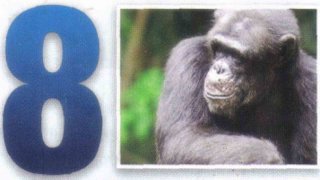
His theory of human beings evolving from apes
In his second-most famous book, The Descent of Man, and Selection in Relation to Sex, Darwin proposed that "human" beings evolved from some type of ape closely related to a chimpanzee.
But when you look closely, you see an enormous amount of difference between chimpanzees and man. The idea, so commonly thought, that we share 99 percent of our DNA with chimps has been refuted with the deciphering of the chimpanzee genome.
The similarity is now down to about 93 percent, according to more recent studies— results that curiously have not made many headlines. Stephan Anitei, science editor for Softpedia, writes: "Well, the new study concludes that the total DNA variation between humans and chimpanzees is rather 6-7%. There are obvious similarities between chimpanzees and humans, but also high differences in body structure, brain, intellect, and behavior, etc." ("How Much DNA Do We Share With Chimps?" Softpedia, Nov. 20, 2006, p. 1).
Again, the question has to be asked: Is the similarity between chimpanzees and men due to a common ancestor or to a common Designer? If a common ancestor, why are human beings so drastically different now from this ancestor while chimpanzees have
remained much the same? The fact is, we are not seeing any evolution presently going on in either chimpanzees or human beings.
The laws of genetics are as insurmountable as ever to have a chimp become anything but a chimp or a man become anything but a man. After 150 years of searching present living forms and the fossil record, no evidence of a fine gradation of species from ape to man has ever been found.His theory of the tree of life
The only drawing Darwin had in his book The Origin of Species is that of the supposed "tree of life." It pictures the imaginary transformation of a common ancestor (at the root level) into the different species we see today (at the twig level). Yet the drawing is actually based on slight variations within a species after many generations, and then he adds some suppositions.
Again Darwin went well beyond the evidence. He took limited evidence about adaptations and extrapolated it to the idea that a species or genus (group of interbreeding species) can transform into a completely different one—all based on speculation. He cleverly said, "I see no reason to limit the process of modification, as now explained, to the formulation of genera [plural of genus] alone" (p. 121). He had to say this since no more direct evidence was forthcoming!
As Jonathan Wells notes: "The most fundamental problem of evolution, the origin of species, remains unsolved. Despite centuries of artificial breeding and decades of laboratory experiments, no one has ever observed speciation (the evolution of a species into another species) through variation and selection. What Darwin claimed is true for all species has not been demonstrated / or even one species" (The Politically Incorrect Guide to Darwinism and ' Intelligent Design, 2006, p. 64).
So instead of a "tree of life" that begins with one or a few common ancestors and then branches out, there is actually an inverted and quite divided "tree of life," where the branches of life were very diverse and numerous at the beginning. Through extinction and sudden appearances, we have fewer kinds of life-forms today than in the past.
"Of all the icons of evolution," adds Dr. Wells, "the tree of life is the most pervasive because descent from a common ancestor is the foundation of Darwin's theory... Yet Darwin knew—and scientists have recently confirmed—that the early fossil record turns the evolutionary tree of life upside down. Ten years ago it was hoped that molecular evidence might save the tree, but recent discoveries have dashed that hope. Although you would not learn it from reading biology textbooks, Darwin's tree of life has been uprooted" (ibid., p. 51).

His rejection of biblical creation by Elohim (pw God)
Charles Darwin was a man of his times. The 19th century saw many major social upheavals—political, philosophical, economic and religious—and Darwin wa? deeply shaped by them.His grandfather Erasmus Darwin, a non-believer who had written on evolution, and his father Robert, also a nonbeliever, had great influence on him. The death of his beloved daughter Annie at the age of 10 greatly diminished any faith he had in Elohim (pw God).
Some 11 years after writing The Origin of Species, he candidly admitted his two main purposes for writing it: "I may be permitted to say, as some excuse, that I had two distinct objects in view; firstly, to show that species had not been separately created, and secondly, that natural selection had been the chief agent of change ...
"Some of those who admit the principle of evolution, but reject natural selection, seem to forget, when criticizing my book, that I had the above two objects in view; hence if I have erred in giving to natural selection great power, which I am very far from admitting, or in having exaggerated its power, which is in itself probable, I have at least, as I hope, done good service in aiding to overthrow the dogma of separate creations" (The Descent of Man, 1871, p. 92).
Notice that the first reason for writing his book was religious—for he sought "to overthrow the dogma of separate creations." In other words, he had no room for a religious version of origins involving the Creator Elohim of the Bible. He promoted the idea that the world of matter and energy, mainly through natural selection and variation, might well account for all life we see around us—a philosophy of science known as scientific materialism.
"The publication in full of Darwin's Early-Notebooks, " says philosopher of science Stanley Jaki, "forces one to conclude that in writing his Autobiography Darwin consciously lied when he claimed that he slowly, unconsciously slipped into agnosticism.
"He tried to protect his own family as well as the Victorian public from the shock of discovering that his Notebooks resounded with militant materialism. The chief target of the Notebooks is man's mind, the 'citadel,' in Darwin's words, which was to be conquered by his evolutionary theory if its materialism were to be victorious" (The Savior of Science, 1988, p. 126).
For him, evolution was "scientific" and was to be viewed with an open mind—but within a closed materialistic system—minimizing or eliminating any role for intelligent design or Elohim (pw God).
Yet instead of the data accumulated during the next 150 years pointing toward blind and random causes of nature doing the creating, we now see it, based on molecular, chemical, biological and astronomical evidence, pointing to a supremely intelligent Designer of all.
As University of California law professor Phillip Johnson so elegantly expressed it: "Darwinian evolution ... makes me think of a great battleship on the ocean of reality. Its sides are heavily armored with philosophical barriers to criticism, and its decks are stacked with big rhetorical guns to intimidate any would-be attackers...
"But the ship has sprung a metaphysical leak [due to the growing case for intelligent design], and the more perceptive of the ship's officers have begun to sense that all the ship's firepower cannot save it if the leak is not plugged. There will be heroic efforts to save the ship, of course ... The spectacle will be fascinating, and the battle will go on for a long time. But in the end, reality will win" (Darwin on Trial, 1993, pp. 169-170).
What About Plant Evolution?
|
|
"...the fossil
record of plants is in favor of special creation" EJH Corner |
It might come as a surprise to
realize Charles Darwin's The Origin of Species hardly touched on plant
evolution. After all, plants make up half of living things on earth.
Yet the supposed main mechanisms of evolution for developing new
species—natural selection and mutation—have not explained either the
sudden appearance of plants in the fossil record or why most plants
have remained essentially the same today as in the past as
demonstrated, for example, by the ginko leaf fossil.
Darwin, of course, knew of the problem—which is why he hardly broached the subject in his book. Years later, he confessed to his good friend, botanist Joseph Hooker, that the sudden appearance of flowering plants in the fossil record was an "abominable mystery." In fact, just about everything dealing with the appearance of plants is, for evolutionists, an "abominable mystery."
Some 375,000
species of plants
exist on earth today, and most have not noticeably changed from the way
they first appear in the fossil record.
As geneticist and biologist Jerry Bergman notes: "A major problem for Neo-Darwinism is the complete lack of evidence for plant evolution in the fossil record. As a whole, the fossil evidence of prehistoric plants is actually very good, yet no convincing transitional forms have been discovered in the abundant plant fossil record" ("The Evolution of Plants: A Major Problem for Darwinists," TechnicalJoumal, 2002, online edition, emphasis added throughout).
Moreover, evolution's
principle of the "survival of the fittest" doesn't apply in the same
way to plants. After all, most plants, unlike animals, possess
chlorophyll and do not have to kill or compete to eat, since they can
produce their own food through the process of photosynthesis. So the
idea that plants must compete against other plants to survive is not
generally applicable. Even those plants that do eat living things, such
as the Venus flytrap, do not eat other plants, but small insects.
Remarkably, it is now known
that many plants have built-in sensors that indicate how far they can
grow without invading the space of other plants. A stunning example of
this is the beautiful canopy made by trees whose branches stop growing
as soon as they touch the branches of neighboring trees.
Years ago, the eminent
botanist E.J.H, Corner made this startling admission about the origin
and the development of plants that still holds true: "Much evidence can
be adduced in favor of the theory of evolution—from biology,
biogeography and paleontology, but I still think that, to the
unprejudiced, the fossil
record of plants is in favor of special
creation [Elohim (pw God) doing the creating],
"If, however, another
explanation could be found for this hierarchy of classification, it
would be the [death] knell of the theory of evolution. Can you
imagine how an orchid, a duckweed, and a palm have come from the same
ancestry, and have we any evidence for this assumption? The
evolutionist must be prepared with an answer, but I think that most
would break down before an inquisition" (ContemporaryBotanical Thought,
1961, p. 97)
Conclusion
Darwin's bicentennial has been and gone but, as Phillip Johnson
predicts,
Darwin's ideas will eventually end up in the trash heap of history.
Johnson concludes: "Every history of the twentieth century has three
thinkers as preeminent in influence: Darwin, Marx, and Freud... Yet
Marx and Freud have fallen ... I am convinced that Darwin is next on
the block. His fall will be the mightiest of the three" (Defeating
Darwinism by Opening Minds, 1997, p. 113). -
We eagerly await that day when people will throw off this pernicious lie of, as Romans 1 describes, exalting what has been created and will instead return at last to acknowledge and worship a loving Creator.
